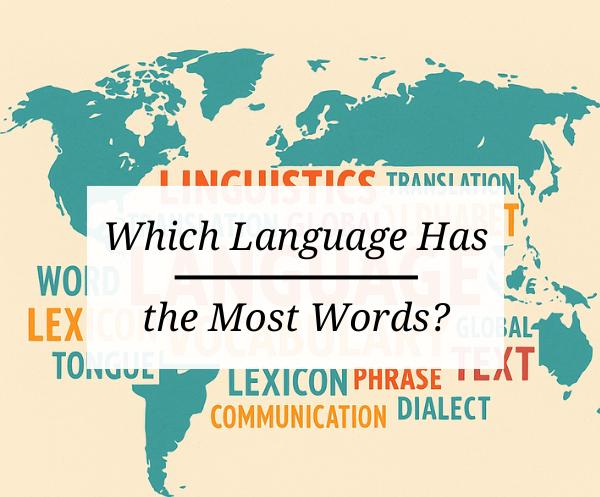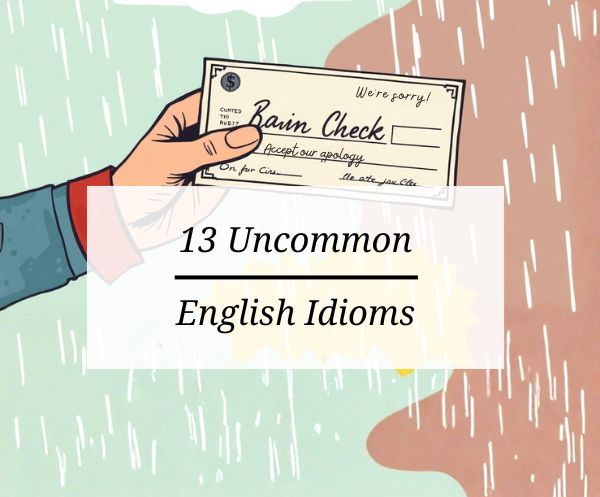Which language really has the most words? By nearly all measures, English holds the crown—and yet arriving at an exact figure is surprisingly complex. In this article, we’ll examine how linguists define and count words, compare the lexicons of major languages (with a special focus on English and Spanish), and reveal why any “most words” claim remains an informed estimate.
What Counts as a “Word”?
First things first: we need rules. Do we count every inflected form (“run,” “runs,” “ran,” “running”)? What about slang, technical jargon, or archaic terms? Linguists typically use one of two methods:
- Dictionary Headwords.
Counting the base entries (lemmas) in a major dictionary.- The Oxford English Dictionary lists about 273 000 headwords and over 600 000 total word forms¹.
- The Diccionario de la Real Academia Española (2014) includes roughly 93 000 headwords², plus about 70 000 regional Latin-American terms³.
- Corpus Counts.
Scanning huge text collections and counting every unique string of letters treated as a word.- Google Books’ “culturomics” project found English added about 8 500 new words per year over the last 50 years⁴.
- But results depend on the mix of sources (tweets vs. novels vs. news articles) and how you split word forms.
Bottom line: no single “right” way exists. Every method has blind spots. Dictionaries preserve dusty, obsolete words and lag on fresh slang. Corpora capture real-world use but vary wildly in content. And languages themselves define “word” differently (e.g., compounds in German or agglutination in Turkish).
A Quick Global Comparison
Below is a snapshot of approximate vocabulary sizes for ten languages, based on major dictionaries or authoritative compilations. Remember: these numbers are estimates, not absolutes.
| Language | Approx. Words | Source |
|---|---|---|
| English | ~600 000 | OED¹ |
| Spanish | ~150 000 | RAE², RAE Spanish-American³ |
| Chinese | ~378 000 | Hanyu Da Cidian⁵ |
| Russian | ~200 000 | Dahl’s Explanatory Dictionary⁶ |
| German | ~330 000 | Grimm’s Deutsches Wörterbuch⁷ |
| French | ~100 000 | Grand Robert⁸ |
| Arabic | ~200 000 | Britannica (Arabic language)⁹ |
| Korean | ~1 100 000 | Urimal Saem dictionary¹⁰ |
| Japanese | ~500 000 | Nihon Kokugo Daijiten¹¹ |
| Portuguese | ~818 000 | Aulete Digital¹², Priberam¹³ |
English: The Undisputed Heavyweight
Let’s be real: English has the largest documented vocabulary. And here’s why:
- Mixed Origins.
English is Germanic at heart but soaked up Latin and French after 1066.- You get “help” (Germanic) and “aid” (French).
- “Kingly” (Germanic), “royal” (French), “regnal” (Latin).
Three words for one idea? That multiplies the count effortlessly.
-
Global Borrowings.
From shampoo (Hindi) to tsunami (Japanese), English happily plucks words from everywhere. If a concept exists, English probably has a word for it—borrowed or coined. -
Science & Tech Jargon.
With English as the lingua franca of research, new terms flood in every week: antidepressant, algorithm, blockchain. Hundreds of these end up in the big dictionaries each year⁴. - Dialect Explosion.
Think British, American, Australian, Indian, Nigerian English—and that’s just the start. Each variant brings its own slang and expressions, many of which get recorded.
Put it all together, and conservative counts put English at at least 470 000 lemmas, with room to reach over a million if you include every technical, archaic, and dialectal term¹. That makes English the unchallenged champ—at least among living, widely catalogued tongues.
Spanish: Lean, Mean, and Terrific
Spanish doesn’t top the overall word-count list, but it’s far from second best. Here’s why it rocks:
-
Curated Core.
The Royal Spanish Academy (RAE) keeps a tight ship on what makes the cut. That means fewer headwords (~93 000), but each is battle-tested for relevance². -
Pan-Hispanic Unity.
Despite being the native tongue of 20+ countries, Spanish retains a massive shared core. Add about 70 000 Americanismos (Latin-American regional words)³, and you get a pan-Hispanic lexicon of roughly 150 000 entries. -
Arabic Legacy.
Medieval Spain bequeathed thousands of Arabic words—álgebra, almohada, ojalá. It was a huge enrichment, though still smaller in scale than what Latin/French did for English. -
Selective Borrowing.
These days, Spanish does borrow from English—internet, marketing, emoji—but the RAE debates each one. That gives Spanish a steady growth without runaway explosion. -
Expressive Power.
Fewer lemmas doesn’t mean you can’t say everything you need. Spanish uses rich verb moods, flexible word order, and vivid phrases. Sometimes one Spanish sentence can carry what an English dictionary word does.
Bottom line: Spanish is lean compared to English but packs a punch. Its carefully curated core and shared global base make it supremely effective—without the immense bulk of English’s borrowed and technical terms.
Other Languages & Sneaky Complications
Not all tongues fit neatly into a table. Let’s highlight a few curveballs:
-
Agglutinative Titans (Turkish, Finnish, etc.).
These languages glue morphemes together. A single “word” can look like a sentence. In theory, they have infinite possible words. Dictionaries list common ones, but you can always build more. -
Germanic Compounds.
German lets you stack nouns: Donaudampfschifffahrtsgesellschaft (“Danube steamship company”) is legendary. Dictionaries often list core compounds only, so counts under-represent true variety. -
Chinese Character Combos.
In Mandarin, “words” are often two-character compounds. The Hanyu Da Cidian rivals English dictionaries with 378 000 entries⁵. But splitting characters vs. compounds gets tricky. -
Dialect Depth.
Arabic has a standard form and countless dialects. The idea that it has 12 million words comes from counting every derivation of every root—and every local variant. Real-world usage is closer to 200 000 distinct words⁹. -
Crowdsourced Dictionaries.
Korean’s Urimal Saem launched as an open project and now lists over 1.1 million entries¹⁰. That’s more a testament to crowdsourcing than to every word being in daily use.
Each of these factors shows why no “word war” is definitive. The way you slice and dice a language—dictionary policy, corpus makeup, morphological rules—totally changes the count.
Why This Debate Beats a Snore
At this point, you might think, “So what? Words are just words.” But here’s the cool part: examining vocabulary size reveals each language’s story.
- English’s story is one of conquest, scholarship, and global reach.
- Spanish’s story is about unity across continents and careful stewardship.
- Turkish and Finnish show the power of grammar to expand meaning.
- Chinese and Japanese illustrate how script and compounding shape lexicons.
- Arabic reminds us that counting roots vs. words can wildly inflate numbers.
Sure, you could argue forever over the precise figures. But the real win is seeing how languages grow, borrow, and adapt. And that’s endlessly fascinating.
So, does English have the most words? Absolutely—by most conventions, it does. But could another language overtake it if we changed the rules? Probably. And that’s why we’ll never stop debating.
References
- Oxford English Dictionary (2nd ed.). “How many words are there in the English language?” https://public.oed.com/how-many-words-are-there-in-the-english-language/
- Diccionario de la Real Academia Española (2014). https://dle.rae.es/
- Real Academia Española. “Diccionario de Americanismos.” https://www.rae.es/dpd/?key=americanismos
- Sinclair, J. “Google Books and the Growth of English.” Culturomics via Wired, 2010. https://www.wired.com/2010/12/web-semantics-google-books-culturomics/
- “Hanyu Da Cidian.” Wikipedia. https://en.wikipedia.org/wiki/Hanyu_Da_Cidian
- Dahl, V. “Explanatory Dictionary of the Living Great Russian Language.” Wikipedia. https://en.wikipedia.org/wiki/Explanatory_Dictionary_of_the_Living_Great_Russian_Language
- “Deutsches Wörterbuch.” Wikipedia. https://en.wikipedia.org/wiki/Deutsches_W%C3%B6rterbuch
- Grand Robert de la langue française. Le Robert. https://www.lerobert.com/
- “Arabic language.” Encyclopaedia Britannica. https://www.britannica.com/topic/Arabic-language
- “Urimal Saem.” Wikipedia. https://en.wikipedia.org/wiki/Urimal_Saem
- “Nihon Kokugo Daijiten.” Wikipedia. https://en.wikipedia.org/wiki/Nihon_Kokugo_Daijiten
- Aulete Digital. “Dicionário Online.” https://aulete.com.br/dicionario-online
- Priberam. “Dicionário Priberam da Língua Portuguesa.” https://dicionario.priberam.org/





